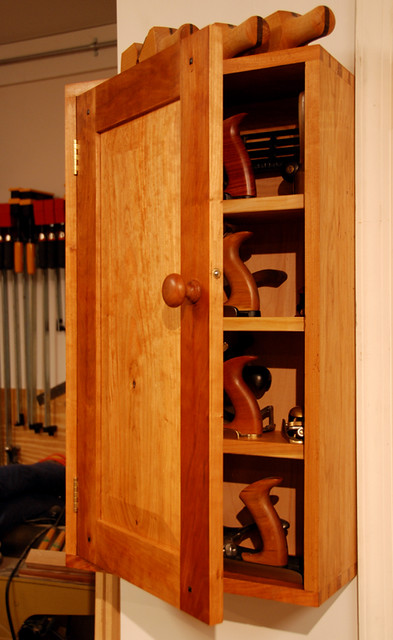Going to be building a plane cabinet and am concerned about attaching it to the wall.
My wall is 3/4 plywood screwed to 2x4....which are "TapConned" into the cellar cement walls.
Since plane cabinets are heavy when full, I am wondering if a french cleat secured through the plywood into the 2x4 will support it.
Does a french cleat work well since the weight is spread across it?
Thanks
Larry




 Reply With Quote
Reply With Quote









